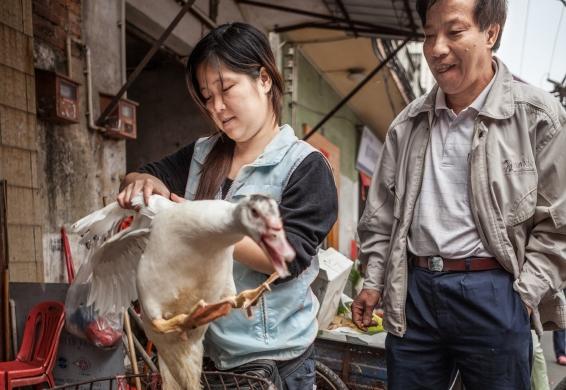Of 29 recent H7N9 avian flu cases in China, 6 were part of three small clusters, but with no sign of sustained spread, the World Health Organization (WHO) said today as it detailed a recent H5N6 avian flu case from China.
A fourth wave of H7N9 infections began in late September in China, and so far it has been smaller than in previous years. Most cases in the WHO's report were already announced by local or provincial health officials but with few details or were noted without details in monthly surveillance reports.
Small H7N9 family clusters
The WHO said in a statement that the 29 cases reported by China reflect illness-onset dates between Jan 17 and Feb 19. Patient ages range from 21 to 78 years old, with a median age of 57.
All but 7 of the patients were men, and 6 of the cases were fatal. The illnesses were reported from six provinces and cities: Zhejiang (7 cases), Hunan (7), Jiangsu (6), Guangdong (4), Fujian (3), and Shanghai (2).
Consistent with the country's past H7N9 pattern, most (24) of the people had a history of contact with poultry or exposure to live-poultry markets.
All three of the clusters involved family members, with two in Jiangsu province. One cluster in that province involved 35-year-old twin brothers with symptom-onset dates of Jan 19 and Feb 1, and neither man had known exposure to poultry. The other consists of a 21-year-old woman and her 26-year-old brother. Both were sick in the middle of February. The man had been exposed to live poultry, and the woman cared for her sick brother but had no known poultry exposure.
The third cluster involved a 29-year-old man from Zhejiang province and his 56-year-old mother from Fujian province. The man got sick on Feb 4, and his mother became ill on Feb 15. Both had been exposed to live-poultry markets.
The WHO said small clusters have been reported before, including among healthcare workers, but so far epidemiologic investigations and virologic evidence shows no change in the H7N9 virus's limited ability to spread among humans.
Since the strain is still detected in poultry and their environments, however, the WHO said more human cases are expected.
H5N6 case details
In a separate report, the WHO noted another H5N6 case in China, involving a 46-year-old woman from Huizhou in Guangdong province. Her symptoms began with a fever and cough on Feb 20, and she was hospitalized on Feb 22, where she remains in critical condition.
China has reported seven H5N6 cases since the end of December, all in Guangdong province. The virus has been detected in poultry in a few Asian countries, but China is the only one that has reported human cases, 10 since the first detection in 2014.
No details were available about the woman's exposure to the virus, but an earlier report on the case from Hong Kong's Centre for Health Protection said the woman had visited a live-poultry market before she became ill.
No other illnesses so far have been detected in her close contacts, the WHO said.
Though H5N6 seems to cause severe disease in humans, infections so far seem sporadic, without any reports of human-to-human spread. The WHO said scientists are continuing to characterize the virus and gauge its pandemic potential, but for now it rated the risk of international spread to be low.
At their most recent flu vaccine virus strain selection meeting, WHO advisors recommended H5N6 as one of two new candidate vaccine viruses as part of preparedness against zoonotic strains. The other was variant H1N1.
See also:
Mar 23 WHO statement on H7N9 in China
Mar 23 WHO statement on H5N6 in China
Mar 15 CIDRAP News story "H5N6 sickens another in China as Egypt notes 2 H5N1 cases"
Feb 25 CIDRAP News scan "WHO advisors switch out 2 vaccine strains for 2016-17 flu season"






















